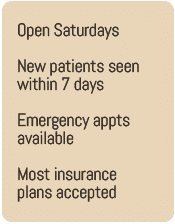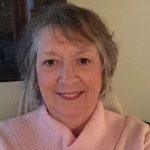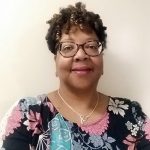Cancer Survivor Pam Day Shares Her Journey to Recovery
Pam Day, a retired school teacher, was diagnosed with stage four hepatocellular carcinoma in June 2013. When she was first diagnosed, it was the size of an orange, and now she is in complete remission. Pam shares her story about conquering cancer and the medical team and support group that had her back the entire way.
What were your first thoughts when you received that diagnosis?
I knew something was up because of the way the ER doctor walked into the room after he read the CT scan. He was very serious about everything and wanted to know how I had been feeling and that sort of thing. Finally, he said, “You are very sick, and I can’t believe you’re talking to me like this.” And then he went on to tell me what the diagnosis was, and he wanted to know whether I wanted to go to Duke or Chapel Hill. And I just looked at him. My husband and oldest daughter were sitting there with me, and we were just in shock because I had no idea anything this serious was wrong.
Afterwards, I was thinking that I always eat healthy. I always exercise. Why would I even think that this would be happening to me? Those were my initial thoughts, and I said, “Okay. So now what do we do?”
The shock is over, so now we need to spring into action. The ER doctor called my primary care doctor, and they gave us two oncologists to call. One couldn’t see me for several weeks, and the other was Dr. Antonio Castillos. He saw me the very next day.
What events led up to the diagnosis?
It was the end of the school year, and I usually just spring right back after two weeks. We had a family celebration, and I got sick on a Friday. All weekend long, my family said, “you need to go to your doctor. we think something else is going on.” That was the only reason I went to the doctor on Monday. My doctor sent me to the ER to have a CT scan.
After the CT scan was read the doctor came right back. He took one look at the scan and told me what I had. I asked, “How do you know so fast?” and he said, “I just know what I’m seeing.” That was the other part of the shock of it all.
How did you choose to share your diagnosis with your other family and friends?
We called our younger daughter and let her know. At the time, she lived in Northern Virginia, and she came down. We didn’t tell anyone else until we knew more about what was going on.
After we met with Dr. Castillos and he explained the option of genetic profiling, we decided to go with that.
After they performed the biopsy, Dr. Castillos and the surgeon, Dr. Calvo, now had something to work with. Once we knew more about the cancer, I talked to my boss, and then we told my extended family, church family and friends.
There’s staging that goes along with cancer, and of course, when you first hear about it, you don’t know that you meet with this doctor and this group and another group and so on until the day of surgery. By then, we had our team in place, and we had a plan. We already had the beginnings of a support group with Dr. Castillos and Dr. Calvo at UNC, and we felt more at ease about things. Both our girls were in the office when Dr. Castillos told us what the staging was going be and how it would proceed.
We must have been there for a few hours, but he answered every question. And it was just wonderful. We became family right there, and that was the beginning of okay – this is going to be fine, I’ll be fine. Then he assured us that after the targeted therapy and surgery it would take some time to heal, but I should be able to just go on with my life. So that’s what I knew from the get-go and just never had any doubts.
Can you describe your course of treatment?
When I first started out on my first surgery, which was in July of 2013, they removed the tumor – by then it was the size of a grapefruit. My tumor grew outside the liver, not inside the liver, but it affected the intestines beside it. They were concerned, so they removed one part of my intestine and said the margins looked fine. Then they decided to go with one drug which was generic to the targeted therapy. That’s what Dr. Castillo used with me, and that went on for six months.
And at the end of six months, they took another CT scan and discovered the tumor had metastasized. That meant there was another pathway, so Dr. Castillos and Dr. Calvo knew they had to operate again to remove as much of the infected tissue as they could.
After the second surgery in April 2014, Dr. Calvo removed more of my digestive track, and there were still two small malignant tumors left which they couldn’t reach. They said they could not do any more surgery, and I went back to Dr. Castillos to form another plan of action. That’s when the gene expression profiling took effect, and he knew to start contacting different clinical studies to help reduce the tumors.
Dr. Castillos found one at the Massey Cancer Center at Medical College of Virginia in Richmond. They had a new drug that would work in combination with the other drug I had been taking to cover the pathway that had developed during the course of all of this.
That’s when I went up to Massey and interviewed with them. They gave me all of the possibilities – the good and the bad. When you’re on a study, you have a lot of responsibility to tell everything that happens – even the little things like if you had a headache. You have to tell them exactly what’s going on because that’s what these studies are all about, and that’s how they perfect them.
We officially began the study in May 2014, and I stayed on it until September 2015. There are always side effects with anything you do, but we all worked together. Massey had a great working relationship with Dr. Castillos, and he had actually been involved in some of the development of that drug anyway. It really was a great partnership, and if the cancer occurred again today, I wouldn’t have to go to Richmond; I could just go to Dr. Castillo’s office and work with him. But that’s not anything I’m planning to do.
I have been cancer free since January 2016, and when they say cancer free that means I’m in complete remission. There’s always a possibility of recurrence, but there is no indication that the tumors are there anymore. Since the genetic profiling was not covered by insurance, we took the money from our savings. Other than taking a generic “cocktail” as they call it – if you know your pathway of your genetic profile, the doctors then know what medicines to prescribe that will be beneficial to your healing process.
How did you feel about your experience with Dr. Castillos and the Massey study?
I was excited Massey Clinic was nearby. The visits began as weekly day trips, then every other week and then every other month, so we had a lot of back and forth between Richmond. If anything came up on the weekend, I would call Dr. Castillos or Massey clinic, and they would call me right back. It was just truly amazing support.
In fact, I was kind of sad when they said I was through with the study because it was like one part of my family was gone. However, my case nurse at Massey still contacts me. She wants photos of me to update the team at Thursday meetings. I know there are so many people suffering, but I always felt like I was their only patient. They made me feel that good about everything.
What did your friends or family members do or say that affected you most?
They always stayed positive, and they brought food. One of my friends from Wake Forest stopped by and brought us a Subway sandwich lunch. They ate and then they left. I would want them to stay longer, but they would say “no – you just need your rest, and so we’ll come again.”
Another person came one afternoon and then stayed for dinner and watched a movie. So there were people that came to visit, and that was always an encouragement.
Another thing was people would send cards. We have friends all over the world. We were missionaries for a while, so there were people even as far away as Greece and Turkey that were praying for us and down in Nicaragua where we served.
We had a network… there were more people that prayed for us than we’ll never know. I just knew there was a miracle happening, and I feel like that’s why I feel I am where I am today because I was just given a 25% chance for survival.
When you find out you have liver cancer in its latest stages, getting right to work and getting on top of it is very important. Everyone remained positive, and I think that’s it. You just don’t think this is going to be anything different, and you’re going to carry on.
The best thing that I will say about targeted therapy is you can get back into your routine quickly. You take the medicine at home, every day, in the morning and in the evening. I did have to manage a lot of side effects.
When I was teaching, I couldn’t walk on my feet very well because the medicine affected my feet and my hands, and my skin would peel. We got one of those walkers with the handgrips and the padded seat. We put a rearview mirror on the handlebar because you’re not supposed to sit on it and roll yourself on it as I did. I had to go backwards, so I had a rearview mirror one of the teachers gave me and a horn. (Laughs.)
I was using my rolling chair first. That wasn’t very stable, so I got what I call my “limo walker,” and the teachers and kids just thought it was hysterical. And when I got to a ramp, I could walk up it because I still needed to exercise. I would walk up and sit back down. One of the ramps ended in front of the handicap bus service for the children, so when they saw me, as a teacher, coming with my “limo walker” they would beam. We had this high-five thing going. It was an upbeat thing for them to see that even big people have these problems, and you can make it.
When the kids would want me to go out and watch them play, I couldn’t be in the sun for very long because of the meds, but the thing that was cool was the kids would say, “can I push you?” And another would say, “no, it’s my turn today!” So even there it was a great thing.
Also, my hair thinned out, but when it came back it came back curly, which was a surprise. We would joke over that. I lost weight too, and people said, “Boy, that’s great …” I’d laugh and say you wouldn’t want to lose weight this way. But even with those side effects we turned it around and made it something positive, which not only helps your spirit but everyone around you.
It was a good thing too because while the students hear how terrible this disease is, they now know that cancer is not a death sentence. There are possibilities and miracles that happen every day, and they helped me walk through that, and they’re first graders! The parents, the kids and everyone – they were just wonderful.
What was your biggest challenge during cancer treatment into survivorship?
There are three things.
One of them was the record keeping. I had to keep notebooks because after a while there is just so much information the tests or x-rays produced. At first, I didn’t read a lot of it because I was just too tired, but as I got stronger I could keep better records. Being the teacher that I am, I would make a lot of graphs, and it helped me and also Dr. Castillo and the clinicians.
The other thing was pacing myself because I’ve always been very busy as a wife, mother, and teacher. In other words, just doing a load of clothes was a day’s work to begin with. Gradually as I got stronger, I still had to realize that I had to rest. When I returned to school rather than going out to recess, I would sometimes sit inside for a little while and tutor students. The other teachers would take the kids outside to help make sure I got the rest I needed. That was a bit of a challenge at times for me because I wanted to push myself and I couldn’t.
I kept losing weight, which was very concerning to me especially when I was in the clinical trial. I lost a little over 60 pounds, and they discovered I wasn’t digesting fats. Then the challenge was to convince myself that if I’m eating something and it tasted too salty, I better eat it anyway. My brother kept saying, “dark chocolate, dark chocolate!” And I hate dark chocolate! “Not dark chocolate, white chocolate!” It was little things like that, but we figured it out.
And you still didn’t like dark chocolate?
No, I didn’t! And that was another hard thing – I had to eat more meals a day. I couldn’t have three big meals. I would have more snack-sized meals. I had never been an egg eater, but I’ve become one because that was one thing that was a good enough meal I could eat.
What kinds of things did you do to distract yourself when you were going through treatments?
My husband, John, and I don’t really think of it as a distraction but as more of a focus on living life. It’s saying, “okay, this is what we can do today. Let’s see what we can do tomorrow.”
I had a schedule. I got up at 4 a.m. every morning. I had to take my medicine because I had to wait an hour before I had my coffee, and that was very important. Then when I was back to work I was already in that mode. I went back to playing piano for church and directing cantatas.
I love to garden. In the winter time, I couldn’t do that, so I started quilting again. Every year for Relay for Life, I would make a quilt and donate it for a fundraiser. There are just more things I could do that I hadn’t done. I would watch a full series of Westerns that I haven’t seen since I was a child.
What words of wisdom would you give someone with a similar diagnosis?
Focus on living life every day and explore new solutions that are out there. Maybe you might be afraid to do that, but we were very lucky that we had the savings for it. Hopefully, insurance policies and companies will realize how important this possibility is for people.
I also think you should continue to look up and say, “Yes Lord, thank you. You closed this door, but you opened this one. Okay, I couldn’t do this today, but I could do that.” You have to continue to understand who created you to and count the blessings God gives us every day. Just look at the team he gave me, I mean who could’ve asked for anyone else? Really and truly those are the things you have to look for. Everyday miracles and just pace yourself. Be healthy, think healthy, help others.
Another thing would be to look for something new, John and I bought an off-road vehicle, I think my girls thought we lost our minds. Once they saw we bought that big machine, they cringed, and they were worried about us. Now they realize that was a pretty cool thing for us to do. And the next year we bought a camper, and now we go camping. Just keep looking at the other things that are out there.
Do you have any final thoughts?
My husband, John, was the most amazing caregiver. After my second surgery, I came home with three drainage tubes protruding from my chest! The medical things he had to do to keep me going were just amazing. Being home as much as possible is the best place for healing and recovery.
At night, you lay there and just carefully think about things and to be able to touch the person next to you is a gift. He was just very, very special and important. He was very protective, and he wanted me to know what I needed to know and didn’t want me to know anything I didn’t need to know until I was ready for it.
He and I both just learned to pace and to heal and to realize okay this isn’t the lifestyle we wanted, but we can manage it together. It just strengthened our whole perspective on things together – life itself.
Plus, you really don’t realize how many people you influence until you’re in a situation such as this. A lot of times it’s hard to let go because you are so used to being the doer, not the receiver. The whole thing about gift giving is it’s important for you to let your supporters give to you as you give to them.

